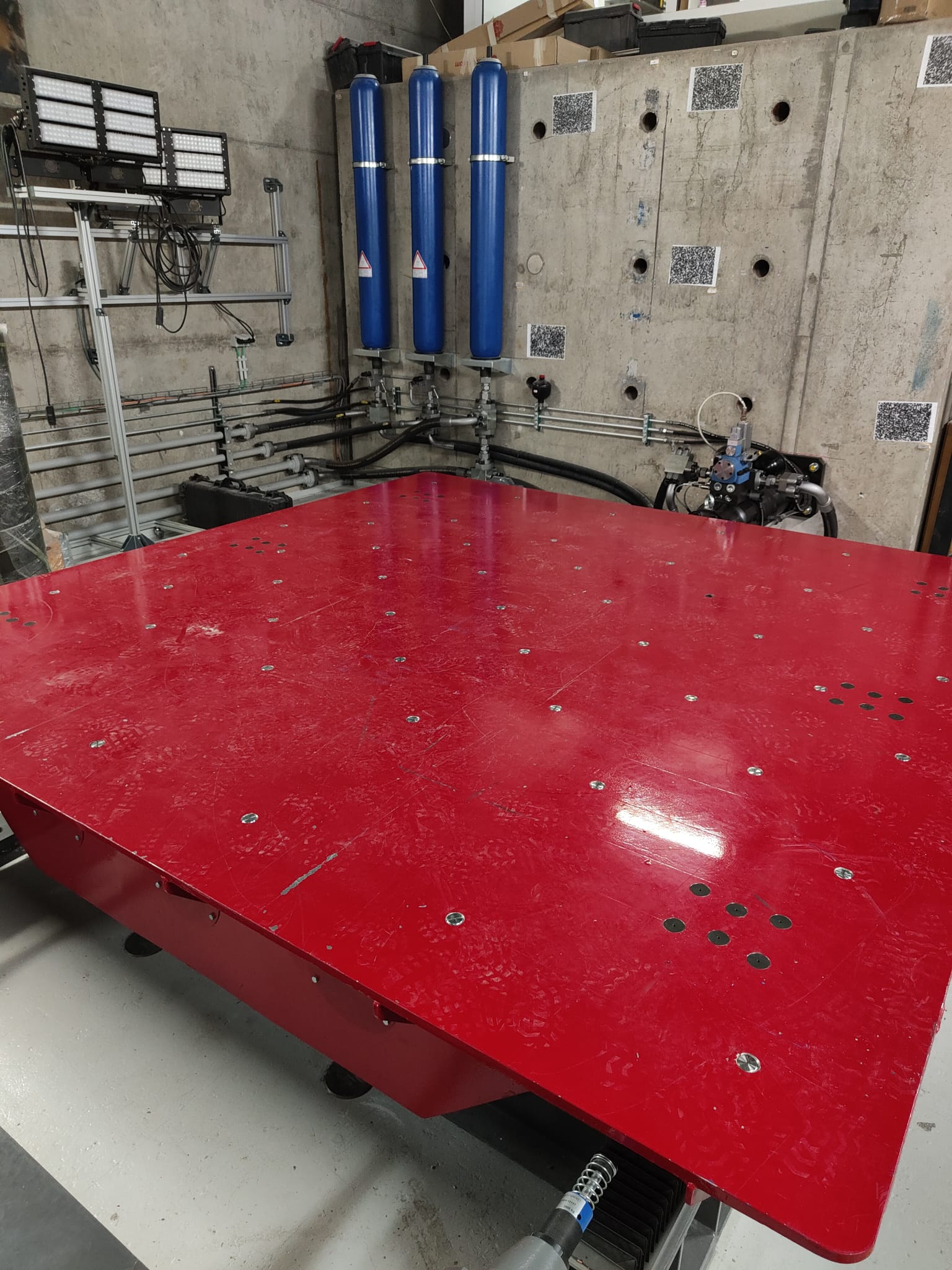The first tests on the brand new 1D-movement shaking-table are now being carried out at UMimho. Its overall specifications are: an effective squared area of 2.90 m x 2.90 m, with a payload capacity of 30 kN and a displacement range of +/- 125mm. The table has an internal grid of threaded holes which allows testing all kind of configurations with different boundary conditions.

Surrounding the testing area is a 6-camera digital image correlation system (DIC), which permits to capture, in a 270° angle-range, the dynamic behaviour of any model being on the shaking-table. The output includes, but is not limited to, a high-precision displacement contour over time and a 3D-digital model that indicates the local deformation of the specimen. Further post-processing features are currently being developed as part of the research objectives.

The first tests consisted in a set of corner walls built of dry-joint granite blocks subjected to different input signals. The boundary conditions were represented by a system that vertically clamped the specimen on its sides. A 1:4-scale was selected for both the blocks and overall wall. Some expected outputs could be to: (a) capture the collapse mechanism of the specimen; (b) identify the failure pattern based on the propagation of hinges along the dry-joints; and (c) calculate the height-wise displacement profile. Some pictures of the set-up, DIC-results and failure patterns can be seen below.

In the forthcoming releases, new videos of the ongoing experimental campaign will be available, so keep being posted!
Share this post